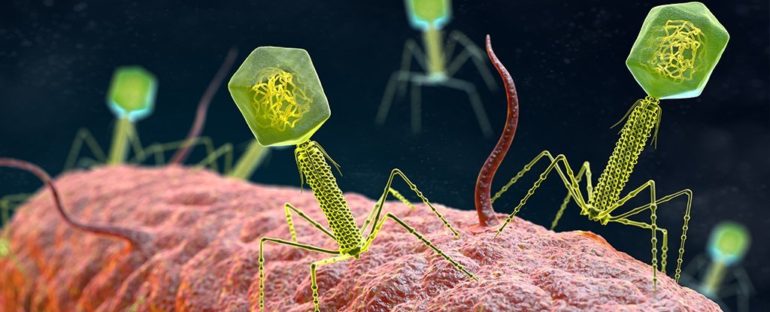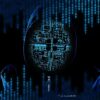Eat or be eaten: It’s an edict of Mother Nature that connects every corner of the biosphere in a sprawling web of producers, consumers, detritivores, and scavengers.
Every corner but one, it seems. Just what the hell dines on viruses?
Scientists may have just discovered the answer.
Given the fact that the viral biomass dusting our landscape, drifting through the atmosphere, and floating in our oceans could easily add up to tens of millions of tonnes of carbon, there’s a surprising absence of life making a meal of this bounty.
If we’re to be technical, there are viruses that have evolved to compete with other viruses by robbing them of their organic building blocks.
But until now, there hasn’t been any strong evidence of an organism engulfing and digesting virion particles for energy or their elemental nutrients.
Two types of single-celled organisms found drifting in the waters of the Gulf of Maine off North America’s coast just might be the first true virophages known to science.
Researchers identified the virus grazers after sifting nearly 1,700 plankton cells collected from the waters of the gulf and the Mediterranean Sea, and amplifying the DNA inside each and every one to create individualised genomic libraries.
Many of the sequences belonged to the organism itself, as would be expected.
Around half of the libraries analysed from the Mediterranean sample contained sequences associated with bacteria likely to have been eaten by the plankton. For the samples pulled from the Gulf of Maine, that figure was more like 19 percent.
Virus sequences were somewhat more common. In the gulf sample, half of the libraries contained snippets of genes from 50 or more different viruses. In the Mediterranean sample it was closer to a third of the sample.
Most of the virus sequences appeared to be from bacteriophages – pathogens that invade and replicate inside bacterial cells.
Bacteria are a common food source for marine protozoans, so finding their dinner came pre-infected isn’t much of a surprise.
But representatives belonging to groups known as choanozoans and picozoans, both collected from the waters off North America, stood out as a little unusual.
For one thing, in many cases there was not a shred of bacterial DNA in sight. Without any signs of a bacterial brunch, it’s hard to know how bacteriophage genes might have ended up inside the planktons’ cells.
More compelling still is that the two completely different phyla of protozoans shared near-identical viral sequences, making it hard to argue that infection was responsible.
While the evidence for a diet of virus snacks could be considered circumstantial, it’s not unlike finding dark crumbs dusting your toddler’s fingers near an empty box of Oreos. Nobody’s going to blame you for being suspicious.
“Viruses are rich in phosphorus and nitrogen, and could potentially be a good supplement to a carbon-rich diet that might include cellular prey or carbon-rich marine colloids,” says bioinformatics scientist Julia Brown from the Bigelow Laboratory for Ocean Sciences.
For the picozoan, the discovery could help solve a mystery on what an insanely small organism barely a few micrometres in length dines on. Discovered a little more than a decade ago, researchers have been trying to figure out their place in the tree of life ever since.
Given both types of protozoan are “cosmopolitan members of marine protist communities“, a bacteriophage diet could have profound consequences for how we model the flow of nutrients through an ecosystem.
Nutrients contained within bacteria and protozoans are expected to progress upwards through a food chain as tiny things get eaten by bigger ones.
An obstacle in this process is referred to as the viral shunt. Infected by viruses, these cells can rupture before they’re eaten, sending a snow of organic matter down through the depths.
Far below on the ocean floor, this shunt accelerates, with viruses greedily churning through prokaryotes, preventing diverse food webs from establishing in the cold, inky darkness.
Knowing that the tables have turned, and prokaryotes are biting back, could require some tweaking in the numbers that describe how this process takes place.
“The removal of viruses from the water may reduce the number of viruses available to infect other organisms, while also shuttling the organic carbon within virus particles higher up the food chain,” says Brown.
This research was published in Frontiers in Microbiology.



